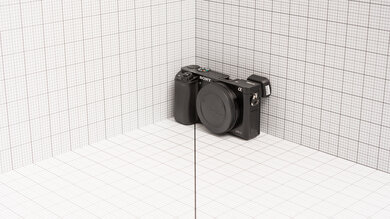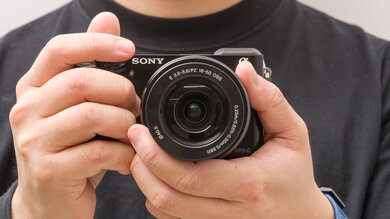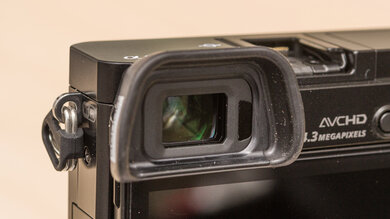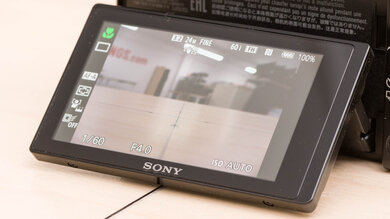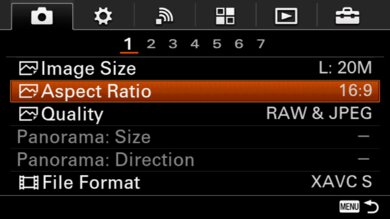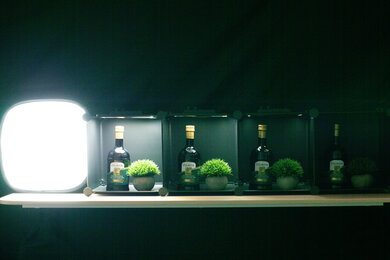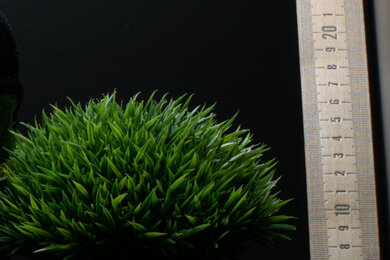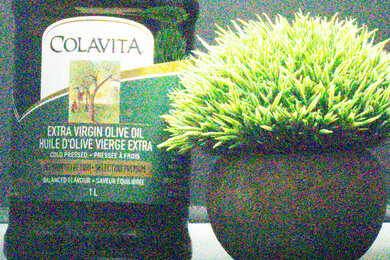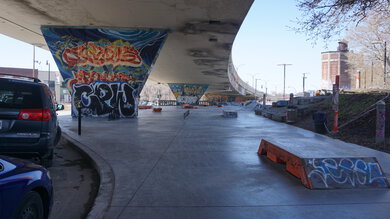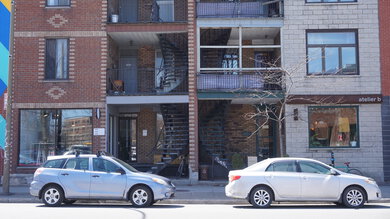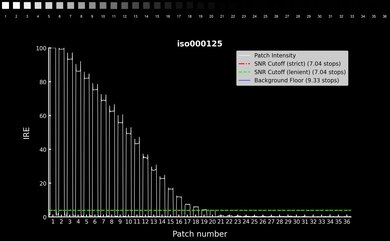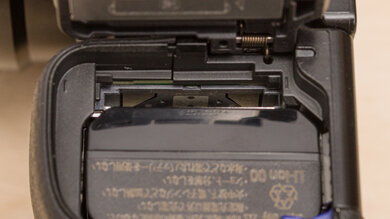The Sony α6000 is the predecessor to the Sony α6100. First released in 2014, this APS-C mirrorless camera is lightweight and portable, with a 24.3-megapixel sensor that holds up surprisingly well against newer competition. While it can't shoot 4k video, and its autofocus isn't as snappy as newer Sony models, this is still a viable option for beginners or budget shooters, with a large ecosystem of compatible E-mount lenses.
Our Verdict
The Sony a6000 is decent for travel photography. It's portable and lightweight, making it easy to store and travel with. Image quality is good, too, thanks to its high-resolution sensor and good dynamic range, though it performs best in brighter conditions. Battery life is decent, though you may still need a spare battery or portable power bank for longer days on the go. Its autofocus system is relatively good, but its AF tracking isn't nearly as reliable as newer cameras.
- Very lightweight and portable.
- JPEGs look sharp and detailed.
- Decent battery life.
- AF system is showing its age.
- High ISO performance is lacking.
The Sony a6000 is good for landscape photography. It's very portable, making it easy to take on hikes or to remote shooting locations. It also has a decent battery life, but you'll likely need an extra battery for longer shooting days. Image quality is nice overall, but while it has good usable dynamic range, RAW files don't fare too well when making extensive exposure adjustments, which can introduce noise and digital artifacts. This is especially true at high ISOs, where its noise handling is just okay, meaning the camera isn't as well-suited to capturing landscapes at night or in low light.
- Very lightweight and portable.
- JPEGs look sharp and detailed.
- High ISO performance is lacking.
The Sony a6000 is okay for sports and wildlife photography. Image quality is good overall, and it can shoot at a fairly quick max burst rate. However, its image buffer is quite small, which can interrupt your shooting if you fill it up at a critical moment. Its autofocus system does well with slower subjects, but it loses track of faster-moving subjects, and it's a little slow to catch up compared with newer AF systems.
- Very lightweight and portable.
- JPEGs look sharp and detailed.
- Fairly quick max burst rate.
- AF system is showing its age.
- High ISO performance is lacking.
- Small photo buffer.
The Sony a6000 isn't well-suited for vlogging. It doesn't have a fully articulated screen, and you can't flip its tilting screen up to face forward, making it hard to monitor yourself for walk-and-talk vlogs. It also can't record 4k video. On the upside, it can shoot at up to 60 fps in 1080p, which is good for recording smooth action footage or light slow motion.
- Very lightweight and portable.
- Video quality is decent.
- AF system is showing its age.
- No 4k video.
- Screen doesn't articulate.
The Sony a6000 isn't suitable for studio video. It can only record 1080p video with 8-bit 4:2:0 color, giving you less flexibility when editing and processing your footage. Video quality is decent, but it doesn't have the best dynamic range and doesn't perform very well in low light. Its autofocus system also shows its age compared to newer Sony models, as it can sometimes lose its target and be a bit slow to catch up. Finally, it doesn't have a headphone jack or microphone input, making it much harder to capture quality audio.
- Very lightweight and portable.
- Video quality is decent.
- AF system is showing its age.
- No 4k video.
- Limited to 8-bit 4:2:0.
The Sony a6000 isn't suitable for action video. It isn't designed to be mounted on action cam rigs or helmets, and it doesn't record in 4k. Plus, it can only record 1080p at up to 60 fps without any higher frame rate options for slow-motion recording. It also lacks any waterproofing or weather-sealing.
- Very lightweight and portable.
- Video quality is decent.
- No 4k video.
- No water resistance.
- Limited high-speed frame rates.
The Sony a6000 has good RAW photo performance. Its dynamic range is good, though it can't capture as wide a range of detail as newer or larger sensors. It also only does a decent job of managing noise in low light. On the upside, its high-resolution sensor captures plenty of fine detail, so images appear sharp.
- Good dynamic range.
- High resolution.
- High ISO performance is lacking.
Performance Usages
Changelog
- Updated Feb 24, 2025: We've converted this review to Test Bench 0.13. We've added new tests for Video Dynamic Range and Luminosity Patch Detection. You can learn more about these updates in the changelog.
- Updated Aug 20, 2024: We've updated the In The Box photo and text to remove the sensor cover and rear lens cap, as they weren't originally included with this camera in the box and had to be purchased separately.
- Updated May 01, 2024: We've touched up some of the text throughout this review to ensure that it's up to date and meets our current standards for quality.
- Updated Jan 29, 2024: Added text to the 'Raw Photo Performance' verdict box.
Check Price
Differences Between Sizes And Variants
The Sony Alpha 6000 has four different color variants: 'Black,' 'Silver,' 'White,' and 'Graphite Gray.' However, the non-black models are more difficult to find. We purchased the black model, and you can see our unit's label here.
You can buy the camera body on its own or bundled with a kit lens like the Sony E 16-50mm 3.5-5.6/PZ OSS. You can also find it bundled with different lens combinations, depending on the retailer.
Popular Camera Comparisons
The Sony Alpha 6000 is an older camera that still offers some value in a very competitive mirrorless camera market. Though it lacks the refinements of newer cameras, it's a popular and affordable entry point into the world of mirrorless photography, especially if you buy a used model. If you don't need the most advanced autofocus or 4k video capability, the α6000 makes for a solid beginner or travel camera.
For more options, check out our recommendations for the best cameras for beginners, the best travel cameras, and the best mirrorless cameras.
The Sony α6100 is a bit better than the Sony α6000. They look and perform similarly overall. However, because the α6100 is a newer model, it has an improved autofocus system and a newer sensor with slightly better dynamic range and high-ISO performance. It can also record 4k video. The α6000 still offers a lot of value for its price, especially if you don't do a lot of video work.
The Sony α6400 is better overall than the Sony α6000, especially if you're interested in video as well as photography. The biggest difference is that the α6400 can record video in 4k resolution. It also has a higher-resolution EVF, a newer sensor with better high-ISO performance, and an improved autofocus system. The α6000 is a bit more portable and offers similar photo performance at a fraction of the price since it's an older model.
The Sony α6700 is significantly better than the Sony α6000. It's an upgrade in almost every way, with better autofocus, image quality, in-body image stabilization, and video capabilities, not to mention better ergonomics, a higher-resolution screen, and an EVF.
The Sony α7 III is better than the Sony α6000. It's a higher-end camera with a full-frame sensor, so it captures images with greater dynamic range and better manages noise in low light. It's also better for video with 4k recording, has a better battery life, and has a higher-resolution viewfinder. However, it isn't as portable as the α6000.
Test Results

The Sony α6000 is very portable. Its body has a low-profile design, and it's very lightweight, making it easy to throw into a bag or take on the go. It's even more compact than newer models in the lineup, like the Sony α6100 and especially the slightly bulkier Sony α6600.
The camera's build quality is good. It's similar to the Sony α6100, though its plastic construction feels cheaper than the magnesium alloy body of the Sony α6400. The inputs and battery compartment are covered by sturdy hinged doors. The buttons also provide nice physical feedback. However, some of the inputs, like the top command dial, aren't the most responsive, as it has a slight delay when you change an input.
The camera feels quite comfortable to shoot with, though its relatively small handgrip and body can feel cramped for those with larger hands. The video record button is also strangely placed by the thumb rest, making it a little awkward to start recording in movie mode. Still, the camera feels lightweight and well-balanced with smaller lenses. It's also easy to adjust settings with either eye to the viewfinder, though the offset EVF is better suited to right-eye shooters.
The EVF is decently sized and fairly comfortable to look through. However, its resolution falls short of newer models like the Sony α6400, so the image doesn't look as crisp. Thankfully, there isn't too much lag.
The camera has a tilting screen, which is great for waist-level shooting. The screen is bright enough to see clearly in sunnier conditions, but it lacks touch capability, making it more cumbersome to navigate the menu and change the settings. The lack of touch capability also means there's no option to use touch focus, as on newer models, so you're stuck with using the control wheel to manually select focus points.
The Sony a6000 uses Sony's older menu system, which is notoriously confusing and difficult to navigate. It's an even older version than what you'll find on the Sony α6400 and that generation of Alpha cameras; there is no 'My Menu' option to save all your most frequently accessed settings in one place. More advanced settings are buried within submenus that aren't all logically organized. However, you can set it to tile view, which makes it a little quicker to get to the right section of the menu. Thankfully, it has a lot of customization options, allowing you to configure the buttons and a custom menu to your preference, so you don't have to dive into the labyrinthine menu as frequently.
If you'd prefer a camera with a full-frame sensor, consider the Sony α7 II, which is from the same generation of Sony Alpha cameras as the Sony α6000.
The battery life for photos is decent, with a 360-shot CIPA rating. CIPA ratings tend to fall on the conservative side, so your mileage will vary in real-world scenarios, but overall, the camera's battery life still pales compared to most DSLR cameras. On the upside, it does support external power delivery, which is great. In video mode, on the other hand, the battery life is quite good, but that's mostly because the camera's limited to 1080p recording, which doesn't drain the battery as fast as more demanding 4k video.
The Sony α6000 can shoot at a fairly quick max burst rate in its high-speed drive mode, which is good for capturing stills of fast-moving subjects. In addition to 'Low' and 'High,' there's also a 'Mid' drive mode that can shoot at 6 fps. Unlike newer models, it doesn't offer a fully electronic/silent shutter option, though it does have an electronic front-curtain shutter (EFCS) mode. Unfortunately, the camera also has a small photo buffer, especially if you shoot in RAW format. The buffer also takes a fair amount of time to empty once full. Though it isn't the worst, it's slow enough that you could miss a key moment while waiting for it to finish clearing.
The autofocus on the Sony a6000 isn't all that great by today's standards, though it was an impressive AF system at the time of its release in 2014. Like other Sony Alpha models, it uses a hybrid on-sensor AF system with both phase-detection and contrast-detection AF points, although it has fewer focus points than newer models.
It includes both face and eye detection for more precise focusing. However, the auto tracking feature isn't nearly as fast or reliable as newer models like the Sony α6400. With faster-moving subjects, you likely won't get an amazing hit rate. However, you can still get an okay usable hit rate for general-purpose and casual photography.
If you're sticking with the center point for continuous shooting, the camera's accuracy is disappointing. You can still get a solid amount of keepers, especially with slower subjects, but it's a lot slower to acquire focus than newer models in the Alpha lineup.
The Sony a6000 doesn't have in-body image stabilization, but you can use an optically stabilized lens to help reduce camera shake and shoot handheld at slower shutter speeds. The Sony E 16-50mm 3.5-5.6/PZ OSS kit lens that we used for the stabilization test includes 'Optical SteadyShot,' Sony's optical stabilization system. It does a decent job of stabilizing the camera for photos. That said, stabilization performance can vary depending on different factors, including the lens, focal length, and even how steady your hands are.
The Sony a6000 has a good dynamic range. While it isn't as impressive as newer, higher-end models like the Sony α6600, especially at higher ISO settings in low light, it still captures a fairly wide range of detail in high-contrast scenes. You do lose some shadow detail, but highlights are preserved quite well. That said, the camera doesn't have the best noise handling, and pushing the exposure of your RAW files too much results in noticeable noise and banding. Overall, that means you can take photos of high-contrast scenes with a fair amount of detail preservation, but you don't have as much leeway when making exposure adjustments as you might with a newer camera.
The camera's high-resolution sensor resolves an impressive amount of fine detail. You can punch in on or crop your photos and still retain plenty of detail.
The camera's RAW noise handling is decent. It performs well at lower ISO values, but noise begins to creep in as you raise the ISO, and it doesn't handle noise as well at higher ISOs in low-light situations. If you want an entry-level mirrorless camera with better RAW noise handling, check out the Fujifilm X-T30 II.
The Sony α6000 can only record video in 1080p and lacks more advanced video features like Log profiles or RAW video output.
The Sony a6000 can record 1080p video at up to 60 fps. Though it lacks higher frame rate options, 60 fps is still good for capturing smooth action footage or incorporating slightly slowed-down clips.
The camera's internal recording capability is good for its class, but it's behind the times. Bit rates are more limited than newer Alpha models, so the camera can't capture video with as much detail or information. Unfortunately, there's also a 30-minute cap on recording.
The Sony a6000 has a decent autofocus system for video. It has a face detection feature but no eye tracking. It does a good job with tracking human subjects, especially with slower movements, but it's not as "sticky" as the AF on newer Sony cameras, meaning there's occasionally a slight delay for the AF to catch up to your subject after they've moved or popped back into the frame. The same goes for the general subject/object tracking, which can be slow to find its target after it's moved.
Video quality is decent. It isn't the sharpest or most detailed 1080p, but it's suitable for more casual recording. Unfortunately, it struggles a bit more in low light, where video looks noisy and muddy. You also lose a lot of detail in the shadows.
There's some noticeable rolling shutter effect when panning the camera from side to side, but it isn't too distracting when the camera's moving at a slower pace.
Inputs and outputs are limited to a Micro USB port and a Micro HDMI port. Unfortunately, it doesn't have a headphone jack or a microphone input, so you're out of luck if you want to record higher-quality audio with an external mic. It's an older camera, so it doesn't support Bluetooth, but you can still transfer files over Wi-Fi if you prefer wireless connectivity.

